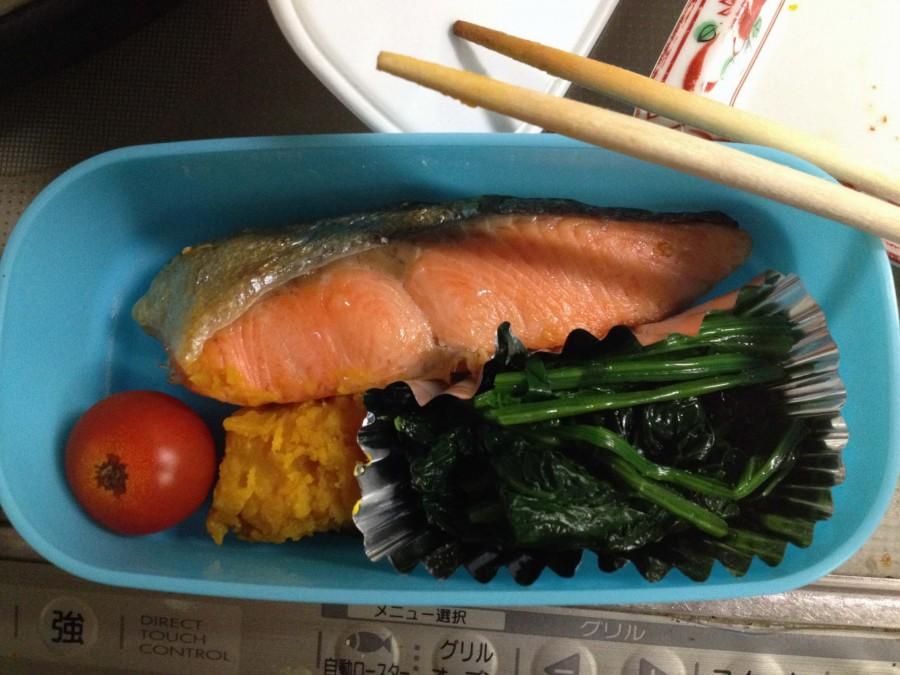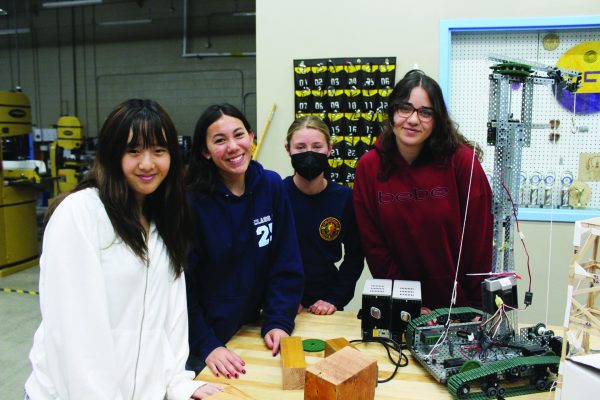School Lunches Not all the Same: Example, Japan
January 29, 2016
Many students’ ears tend to be attuned to two sounds in school: the final bell and the lunch bell. The latter has especially been true for me in Japan, where I have attended school every summer since first grade. One of the cultural elements I have always looked forward to there is the food, especially school lunches. For Japanese school lunches bear little resemblance to the meals served here in American cafeterias.
In Japanese public elementary and middle schools, all students, and even teachers, eat the same school lunch (Perhaps that explains the higher quality.). Students don’t switch classrooms for different courses, even in middle school, and lunch takes place in the same room, with the same classmates. Every week, a team of students is assigned to don white chef coats, pick up heavy buckets of food from the first-floor kitchen, heave them back up several flights of stairs, wipe down the carts that the food containers are placed on and finally, serve students their meals. When the class is served, students recite the greeting “itadakimasu” or “Let us eat” in unison. Conversely, a greeting of gratitude literally translating to “I was able to feast” concludes the meal. Then, students return the food containers – at least they are lighter to carry after lunch!
So, what did we actually eat? The school lunch consists of a main dish of cooked and seasoned vegetables and typically fish (decades ago, whale used to be served), with a steaming bowl of soup ranging from egg drop to stew and curry. The main dish and soup vary daily, with occasionally a treat such as fresh cherries. Milk accompanies the meal, along with rice almost always. Alas, the lunch that seemed to excite students the most because of its infrequent debut and foreign novelty was sliced white bread with jelly. Yes, the humdrum “PB and J,” but without the PB. I guess the grains are always grander on the other side of the Prime Meridian.
School lunches are optional in high school. Many students buy school lunches at the cafeteria, whose offerings ranged at my school from noodle bowls to bento boxes with pork cutlets or dumplings and rice. However, the cafeteria was usually crowded, and my friends brought their lunches, so I decided to pack my own bentos. I hunted for simple recipes online. After floundering in the Internet’s sea of too-perfect mouth-watering photos, however, I ended up just steaming large batches of spinach and stir-frying carrots for the freezer. Every morning, I heated up leftover rice, scooped it into a bento box and dropped in the premade vegetables and leftovers, such as grilled fish and a slice of pumpkin. Tying a square furoshiki cloth around the boxes wrapped up the task. Often, I cooked these leftovers from raw items bought fresh the day of, and so I learned to gut fish and squid. It was gross, but unlike dissections, at least you get to eat it afterwards. You’re welcome for the appealing comparison.
Students could also purchase lunch food on the way to school from convenience stores. In Japan, convenience stores like 7-Eleven sell actual, fresh cuisine, from fish-filled rice balls to ready-to-eat pan-fried noodles and sandwiches.
I not only experienced food at school during lunch, but also during Home Economics classes, which are taught elementary to high school. In high school, when we learned about the biochemistry of food groups such as carbohydrates, our teacher brought in samples of different varieties of Japanese rice for us to taste and compare. In addition, for a cooking lesson, students were split into groups to prepare the authentic, traditional Japanese delicacy of… pancakes from a mix. The caveat: all communication while cooking had to be in English. The Home Ec teacher aimed for this experience to be practice for students to get by in a foreign language.She encouraged them to reach out to struggling foreigners in an increasingly globalized society, even if students weren’t confident in their English (While fluently understanding what she said, I had the uncanny feeling that my role was to represent the “struggling foreigner.”). Nonetheless, I was touched by my teacher’s caring conscientiousness. After the cooking activity, the teacher praised the determined efforts of one student who had needed a sponge to wash dishes but didn’t know how to say “sponge” in English, so had strived valiantly to identify a sponge in the limited English vocabulary he knew, like verbal charades. I didn’t have the heart to tell them that the Japanese word for sponge had been adopted from English, so they basically pronounced it the same – “sponge” versus “sponji.”
Experiencing lunches at Japanese schools has offered a valuable taste of another culture. Not all school lunches are created equal. So, don’t assume the worst and skip out on campus lunches if you study abroad or travel: they can fulfill appetites for both culinary and cultural appreciation.








